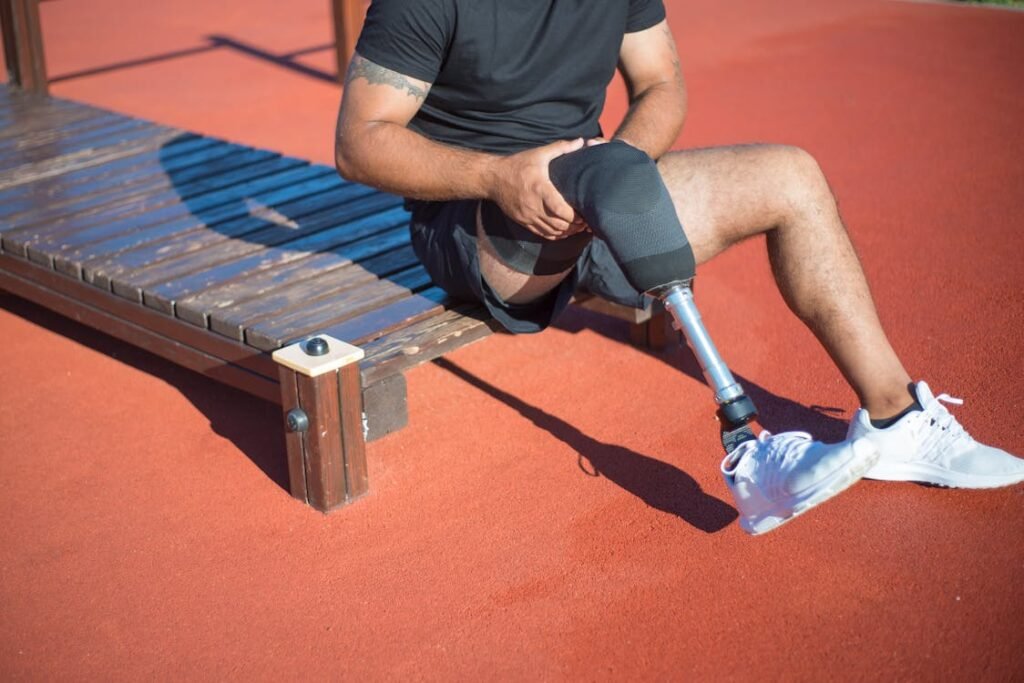For older adults, one small misstep can have serious consequences. A fall that lasts only seconds can lead to months of pain, fear, or even permanent loss of independence. But the truth is, many of these falls are preventable. The key lies in understanding how the body moves—and how that movement changes with age.
This is where custom biomechanical tuning makes a real difference. It’s not about giving every senior the same solution. It’s about looking closely at how each person walks, balances, and stands—and then making small but powerful adjustments that help them stay upright, stable, and confident.
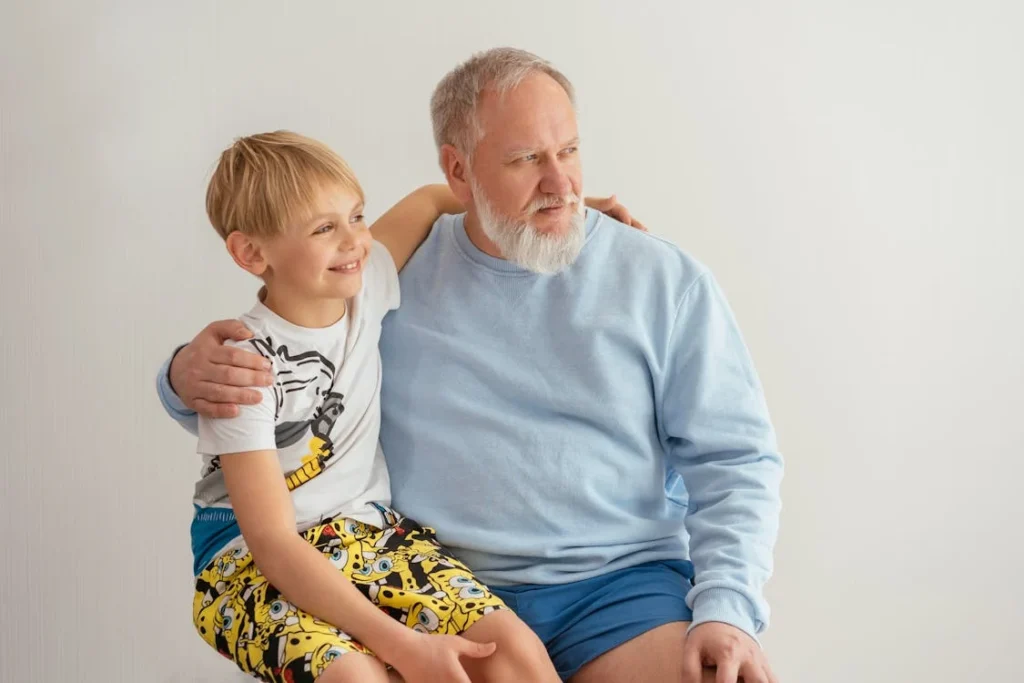
Understanding How Aging Changes the Way We Move
To understand how custom biomechanical tuning can reduce falls, we first need to look at how the body naturally changes with age. Movement in youth is often smooth and automatic.
But as we grow older, the body’s balance system starts to slow down. That’s not a weakness—it’s simply part of aging. The trick is learning how to work with these changes, not against them.
The Subtle Decline of Balance and Stability
One of the biggest reasons seniors fall is because their sense of balance becomes less reliable. This isn’t always obvious at first.
You may feel just a little unsteady when walking on uneven ground. Or you might notice it’s harder to recover if you trip on something small. Over time, these minor changes add up.
Our balance relies on three main systems: vision, inner ear (vestibular system), and feedback from the muscles and joints (proprioception). As we age, all three become less sharp.
Vision fades, the inner ear becomes less responsive, and the brain takes longer to process information from the feet and legs. This makes it harder to react quickly when something goes wrong.
These changes mean seniors often rely more on their eyesight or use their muscles differently to stay upright.
Without support, this leads to a stiff, careful walking style that may feel safer—but ironically makes falling more likely. Why? Because it reduces flexibility and reaction time.
Muscle Loss and Joint Stiffness
Another important factor is muscle strength. Aging naturally leads to a gradual loss of muscle, especially in the legs and core.
These muscles are key to balance, walking, and standing from a seated position. If they weaken, every movement becomes harder—and less stable.
Joint stiffness is also common. The hips, knees, and ankles don’t bend as easily. That affects stride length, speed, and the ability to recover from a slip. When you can’t move quickly to catch yourself, a stumble becomes a fall.
The gait pattern, or the way someone walks, also changes. Many seniors take shorter steps, lift their feet less, and move more slowly.
These adjustments are often unconscious, but they increase the chances of tripping, especially on small obstacles like rugs, curbs, or cracks in the pavement.
Psychological Fear of Falling
There’s one more change that’s just as important as the physical ones: fear. Many seniors who’ve fallen once become scared of falling again. This fear causes them to move more cautiously.
While that seems like a good idea, it often leads to tighter muscles, worse posture, and less natural movement—ironically increasing the risk of another fall.
Biomechanical tuning can help break this cycle. When a device is properly adjusted to a senior’s unique movement pattern, it gives them more control and less fear.
Confidence is just as important as strength when it comes to fall prevention.
Why One-Size-Fits-All Doesn’t Work
Many support devices for seniors—like canes, walkers, orthotics, or even prosthetics—are sold with standard settings. But no two people move the same way. Even two seniors of the same age, height, and weight may walk completely differently based on past injuries, posture, strength, and habits. That’s why custom biomechanical tuning is essential.
A walker set too low can force someone to hunch over. A prosthetic foot that doesn’t match someone’s stride rhythm can make walking uneven.
Shoes with the wrong heel height or angle can throw off balance. These details might seem small, but over time, they create stress that builds up—and that stress is what causes falls.
Custom tuning is about identifying those details and correcting them. It’s a process that starts with careful observation: how someone stands, how they turn, how they handle steps or slopes.
From there, small adjustments are made that align better with their body and how it naturally wants to move.
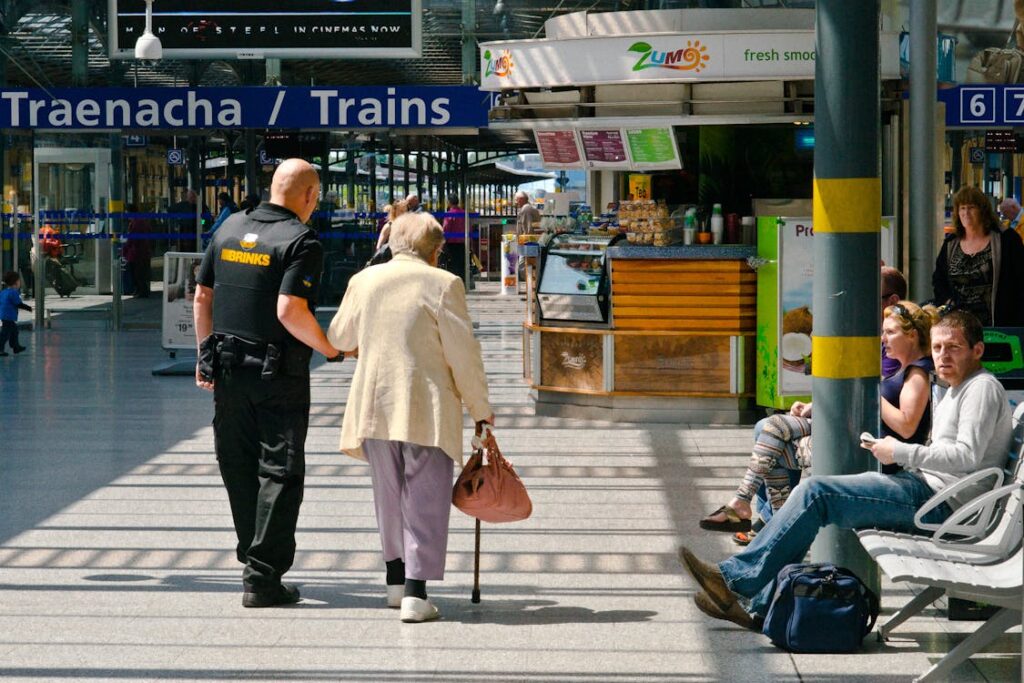
What Is Custom Biomechanical Tuning?
Custom biomechanical tuning means adjusting movement-related tools and supports so they work perfectly with a specific person’s body. It isn’t just about making something more comfortable.
It’s about helping the body move in a way that feels natural, stable, and safe. For seniors, this fine-tuning can mean the difference between confidence and constant worry.
How It Works
The process starts with a close look at how a person moves. This includes observing how they walk, how they balance when standing, how they shift weight from one foot to the other, and how their posture responds to small challenges—like turning, climbing stairs, or stepping over a small bump.
Professionals use tools like gait analysis, pressure sensors, and even simple observation to understand movement patterns. Some clinics use treadmills with sensors built into them.
Others use motion-capture systems or even high-speed cameras. But even without high-tech gear, a trained eye can catch a lot of important details just by watching someone walk across a room.
After collecting this information, small changes are made to devices the person already uses. That might mean reshaping a prosthetic socket, changing the angle of a shoe insert, adjusting the height of a cane, or changing the stiffness of a knee joint in a prosthetic.
Sometimes it’s as simple as using a different material to add softness or grip in key areas.
It’s Not Just for Prosthetics
While biomechanical tuning is often talked about in relation to prosthetic limbs, it applies to many other tools that seniors use every day.
Orthotic shoe inserts, ankle-foot braces, walking aids, and even basic footwear can all be tuned for better balance and smoother motion.
Footwear is especially important. A small mismatch in heel height or sole shape can lead to poor posture, which affects balance. Custom insoles can support better foot positioning, reduce fatigue, and even encourage a more even walking pattern.
Tuning isn’t about changing how someone moves completely—it’s about removing the small barriers that make natural movement harder.
Adapting to Changes Over Time
Another benefit of custom tuning is that it evolves as the person changes. Unlike a one-time solution, this is an ongoing process.
A person’s strength, posture, and walking pattern will change as they age—or even from month to month, especially after surgery or illness.
Biomechanical tuning is flexible. It allows devices to be updated as needed. This is especially important for seniors recovering from a fall or injury. The body may compensate in odd ways while healing.
If the prosthetic or support device isn’t adjusted during this time, the person may develop a new, unhealthy way of walking that becomes a long-term habit. Catching and correcting these issues early prevents further complications.
Real-Life Example
Imagine a senior named Mr. Sharma who uses a below-knee prosthetic. At first, everything fits fine. But as his muscle tone changes and he becomes less active, his prosthetic starts to feel too stiff.
His stride shortens, and he finds himself tilting slightly forward as he walks. That tilt causes pressure on his lower back and makes it harder to recover if he stumbles.
A simple adjustment—changing the alignment of the knee joint and softening the foot strike—restores balance.
He stands taller, walks more evenly, and most importantly, feels confident again. That’s the power of biomechanical tuning. It doesn’t just fix the device. It fixes the way the person moves through their world.
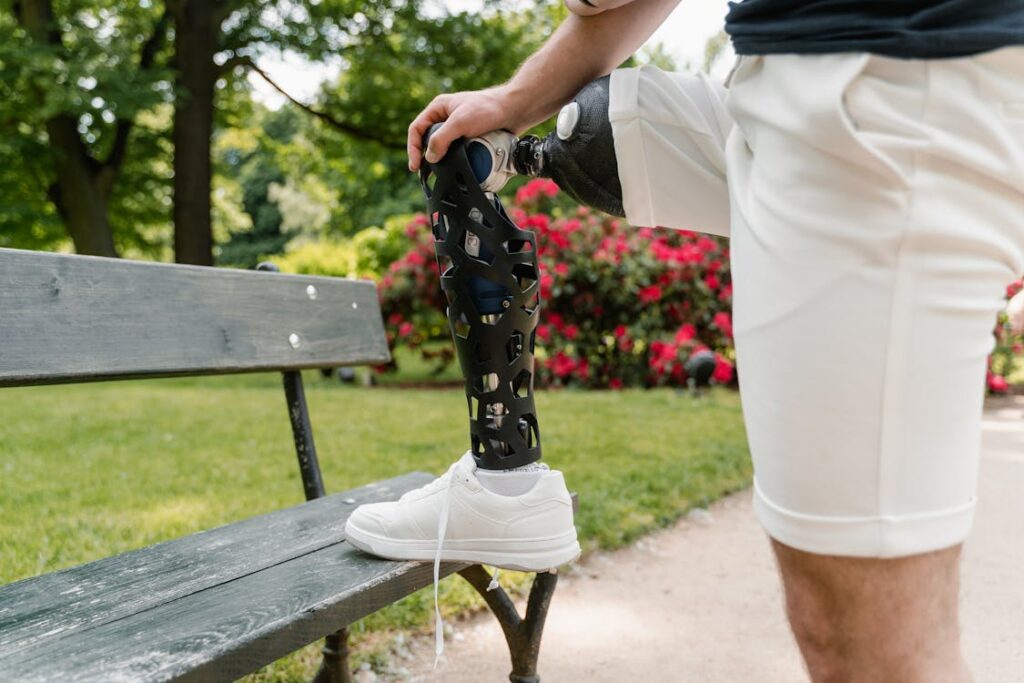
The Science Behind Stability
Staying upright sounds simple, but in reality, it’s a constant balancing act. Our bodies are always making tiny adjustments to keep us steady. When we stand still, muscles in our legs, back, and core are working to stop us from tipping over.
When we walk, our brain coordinates each step, making sure weight shifts smoothly from one foot to the other. This automatic balance system becomes less efficient with age, but biomechanical tuning can help bring it back under control.
How the Body Reacts to Imbalance
When something feels off—like a loose shoe, a bumpy floor, or a step that’s slightly too high—the brain sends fast signals to correct our posture. Muscles shift, knees bend, arms move outward to keep balance.
For younger people, this all happens in a split second. But for seniors, those signals move slower. The muscles may not respond as quickly or as strongly. If the correction takes too long, a fall can happen.
Now imagine if the body had fewer surprises to deal with. If every step felt solid and balanced. That’s what biomechanical tuning tries to achieve.
It doesn’t make the nervous system faster, but it reduces the number of times it needs to act urgently. The smoother and more predictable the walking pattern, the less likely it is that a sudden misstep will cause a fall.
Key Adjustments That Make a Difference
One important area is foot positioning. If the heel strikes the ground too hard or at the wrong angle, it throws off the entire movement chain.
Custom tuning can soften the heel strike, slow down the forward motion, and make it easier for the foot to roll naturally. This keeps the center of gravity within a safe range.
Another area is joint flexibility. For example, a stiff knee joint in a prosthetic can make it harder to climb stairs or rise from a chair.
By adjusting the stiffness, seniors can regain that motion—and with it, better balance and less risk of stumbling.
Even posture correction plays a role. A forward-leaning posture increases the chance of falling forward.
Through custom tuning—either in prosthetics or through supportive devices—the body can be brought back into a more upright, balanced position.
What’s important here is that none of these adjustments need to be large. In fact, small changes are often the most powerful.
A few millimeters in alignment. A tiny change in resistance. These small tweaks, when added together, restore natural movement and reduce the need for risky compensations.
The Role of Sensory Feedback
Another often overlooked piece of the puzzle is sensory feedback—how the body knows where it is in space. In younger people, nerves in the feet and joints send constant updates to the brain.
But with age, these signals become weaker. Many seniors have some degree of neuropathy or reduced sensation, especially in their feet. This makes it harder to know if the ground is firm, sloped, or uneven.
Biomechanical tuning can enhance the feedback loop. Some prosthetics and orthotics are designed to transfer vibration or pressure more clearly, giving the brain better information about ground contact.
Materials like carbon fiber or silicone inserts can be used to amplify subtle signals.
When the brain gets clearer input, it responds more confidently. That confidence leads to smoother walking and fewer falls. It’s like switching from a fuzzy camera to one in sharp focus—the same scene, but easier to understand and navigate.
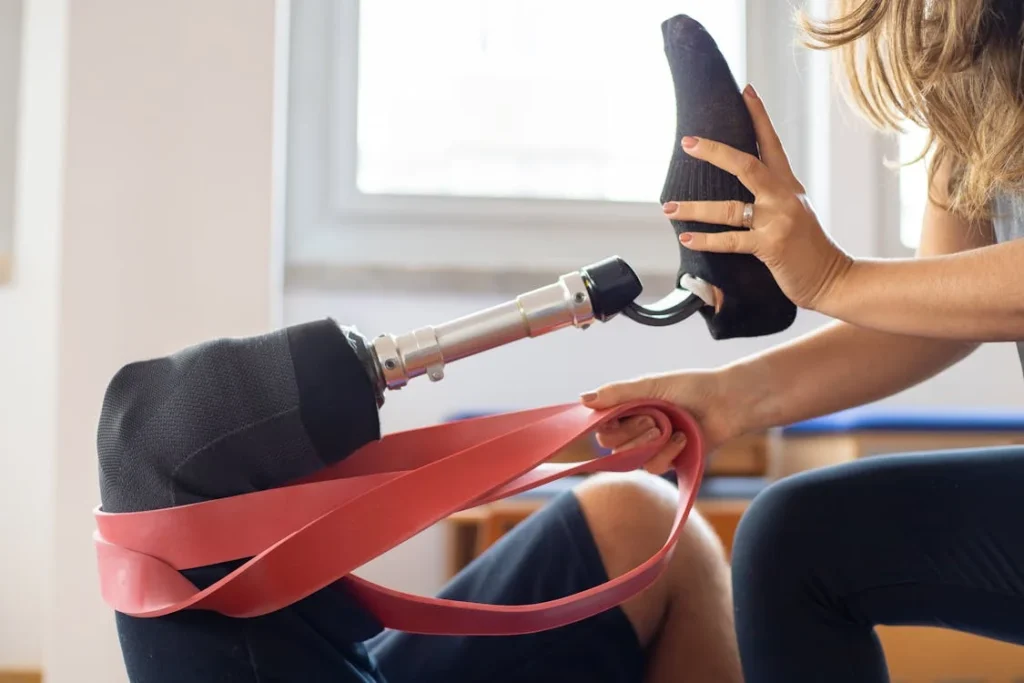
From Clinic to Home: Making Biomechanical Tuning Practical
While the science and theory behind biomechanical tuning are important, the real value lies in what it can do in everyday life. The goal isn’t just to improve movement in a lab or during a check-up.
It’s to help seniors move better in their homes, on sidewalks, in grocery stores, and anywhere else they go. Making biomechanical tuning practical means connecting expert knowledge with real-world routines.
The First Step: Assessment and Listening
It all begins with a conversation. Seniors often have deep knowledge about how their bodies feel. They might say things like, “I feel wobbly on stairs,” or “My knee hurts when I turn.”
These comments, though simple, are full of clues. They guide clinicians and prosthetists toward specific issues that need tuning.
Observation follows next. A senior’s natural movement says a lot about where they’re compensating, where they’re struggling, and what devices are helping—or hurting—their gait.
Walking on different surfaces, climbing stairs, getting up from a chair—these moments show what adjustments could improve safety.
This isn’t a one-time fix. Bodies change. Even the most carefully tuned prosthesis or orthotic will need updates as strength, posture, or comfort levels shift.
That’s why follow-up visits are essential. They allow for micro-adjustments that keep everything working as it should.
Making Adjustments Seniors Can Feel
One of the biggest goals in biomechanical tuning is to create change that seniors can actually feel.
It’s not just about looking better on paper—it’s about making walking smoother, standing less tiring, and movement less frightening.
For example, many seniors say they feel like they’re going to fall backward when walking. This could be due to an imbalance in weight distribution or joint stiffness.
Adjusting the angle of a prosthetic foot or lowering the heel of a shoe insert can bring the center of gravity forward again, making walking feel more secure.
Others might feel pain in the hips or knees. Often, the cause isn’t in those joints but in how the foot hits the ground.
Correcting that foot strike with a tuned sole or insert can reduce strain in the upper joints without any need for medication or surgery.
When seniors notice even small improvements—like walking longer without needing to rest—they become more active.
This activity strengthens muscles, improves coordination, and further reduces fall risk. It creates a positive cycle that builds on itself over time.
Training the Brain and Body Together
Adjustments alone aren’t enough. The body also needs time to adapt. This is why rehab and training are such an important part of the tuning process.
Physical therapists often guide seniors through exercises that teach the body to move in better ways using the newly adjusted device.
These exercises are simple. Stepping up and down, balancing on one leg, walking in a straight line—they don’t look impressive, but they retrain the nervous system to trust the body again.
The more these movements are practiced, the stronger the brain-body connection becomes.
Custom tuning works best when it’s supported by regular use. That’s why the design also needs to match the senior’s lifestyle. If a device is too heavy, too stiff, or too complex, it won’t be used. T
hat’s a failure—not of the technology, but of how it was applied. A tuned solution must feel like an upgrade, not a burden.
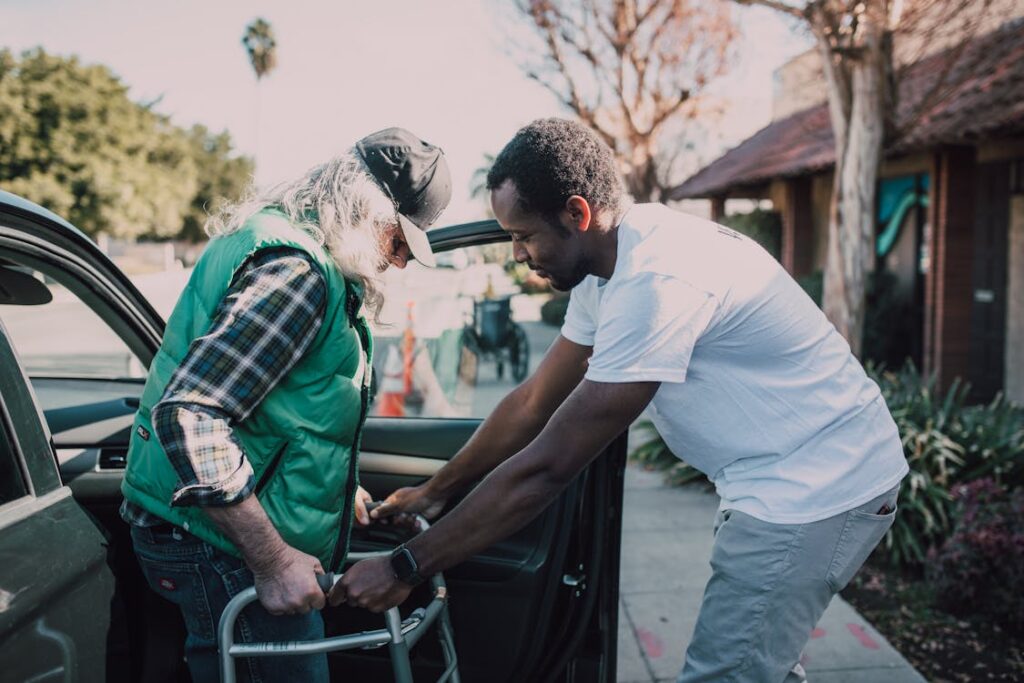
Empowering Independence Through Better Movement
At the heart of biomechanical tuning is one clear goal: giving seniors the freedom to live on their own terms. Falls don’t just cause physical injuries—they shake confidence.
Many older adults who fall once start avoiding activities they once enjoyed. They may stop walking outside, stop attending social events, or avoid stairs altogether. This creates isolation and often leads to faster physical decline.
Custom biomechanical tuning can reverse that downward trend. By making movement safer and more comfortable, it opens the door to independence again.
Confidence Is the True Outcome
After a fall, many seniors walk cautiously. They take shorter steps, move slowly, and often stiffen their knees and hips.
This kind of guarded walking is actually more dangerous. It reduces natural balance and makes recovery from a misstep harder.
Tuning helps restore trust in the body. When movement feels more natural, seniors start to walk the way they used to.
They lift their feet higher, swing their arms more freely, and shift their weight with more rhythm. These small returns to natural movement reduce the risk of tripping and falling.
Confidence isn’t just emotional—it’s biomechanical. A confident walker uses their muscles and joints in balance. A fearful one holds tension and moves unevenly.
Custom tuning supports confidence by giving seniors a stable base they can rely on with every step.
Caregivers and Clinicians: A Team Effort
This process doesn’t happen alone. Families, caregivers, and clinicians all play a part. A caregiver may notice small changes in how a loved one walks—like dragging a foot or turning awkwardly. These clues can signal that it’s time for a tuning update.
Clinicians, on their part, guide the process using both data and experience. They know which changes will help most based on posture, strength, and history. But they also listen.
The senior’s feedback is the most important part of the equation.
Together, this team approach makes it possible to create highly personalized solutions. Each person’s needs, fears, and goals are taken into account. That leads to better outcomes—not just fewer falls, but fuller lives.
Affordability and Accessibility
A common concern is cost. People assume custom tuning is expensive or out of reach. But the truth is, it’s more affordable than many expect—especially when weighed against the cost of a fall-related injury.
A single fall can lead to hospital bills, rehab, long-term care, and a serious drop in quality of life. Tuning, on the other hand, is a preventive investment.
Many clinics now include tuning as part of their standard prosthetic or orthotic services. Some insurance plans cover it as part of fall prevention.
The bigger challenge is awareness. Many seniors don’t know tuning exists—or they think their discomfort is just something they have to live with.
Sharing this knowledge, whether through clinicians, family, or community programs, can help more people access this valuable support.
Not Just About Safety, But About Joy
The most powerful part of biomechanical tuning isn’t just preventing falls. It’s watching someone walk confidently into their garden again.
It’s seeing a grandparent pick up a child without wobbling. It’s being able to enjoy a stroll without fear. These aren’t small victories—they’re life-defining moments.
When movement feels effortless, life feels bigger. There’s more room for joy, activity, and independence. That’s the true value of a tuned body: it gives back the freedom that aging so often tries to take away.
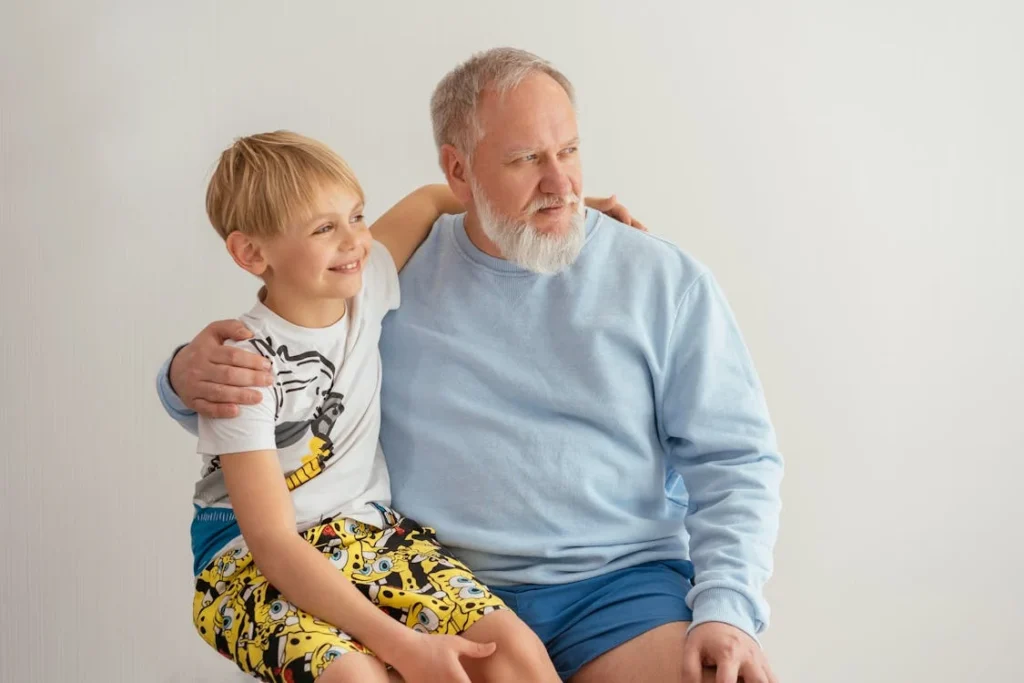
Conclusion
Custom biomechanical tuning is not just a technical fix—it’s a powerful step toward safer, stronger, more independent living for seniors. By adjusting support devices to match each person’s unique way of moving, we can reduce the risk of falls and help restore natural balance. These small, thoughtful changes make everyday life easier, less stressful, and more enjoyable.
Falls are not just accidents. They’re often signals that something in the body’s movement system needs support. With custom tuning, we don’t just react—we prevent. We protect dignity, preserve mobility, and bring confidence back into every step.
At Robobionics, we believe every senior deserves to move through life with comfort, security, and pride. And with the right biomechanical support, that’s more than possible—it’s within reach.



